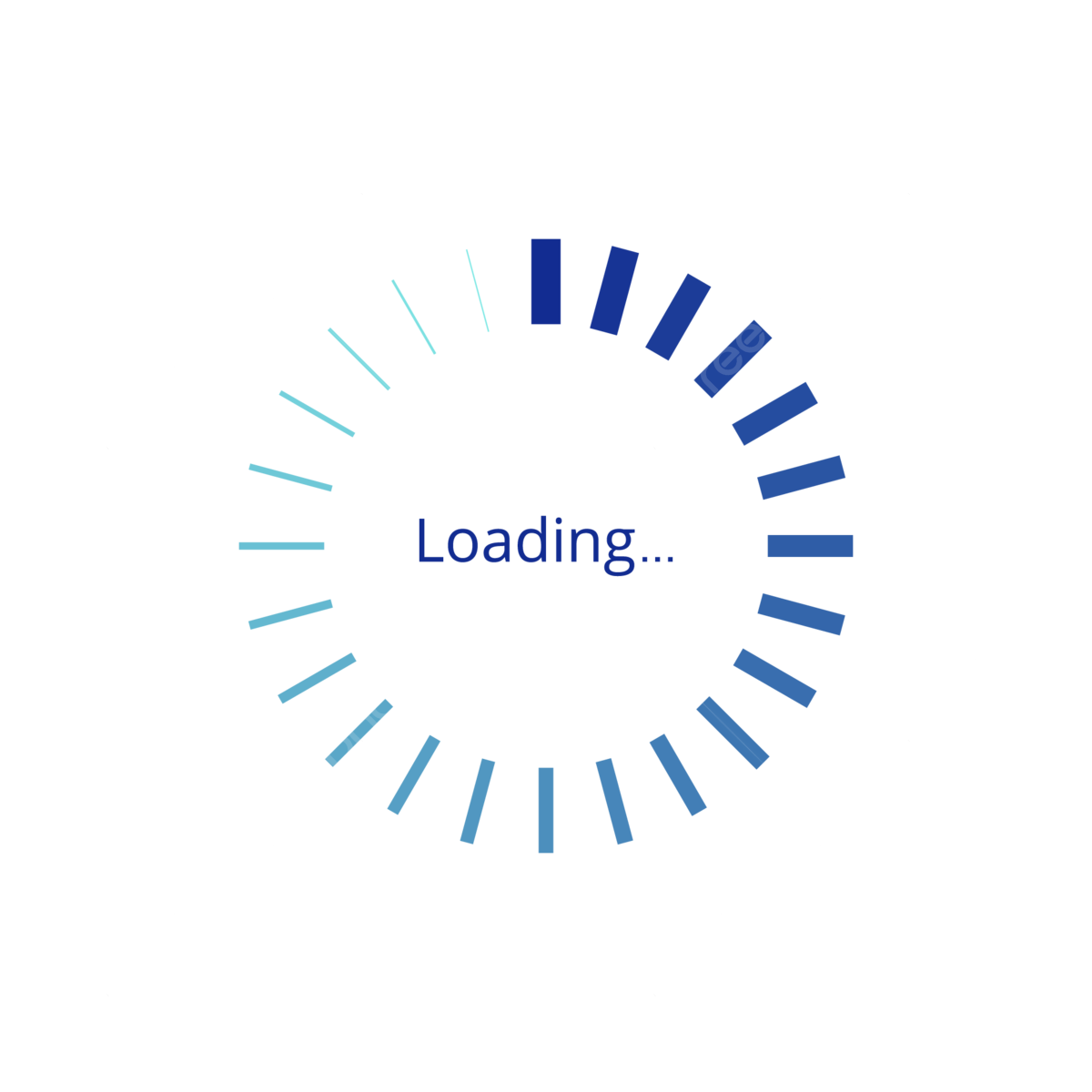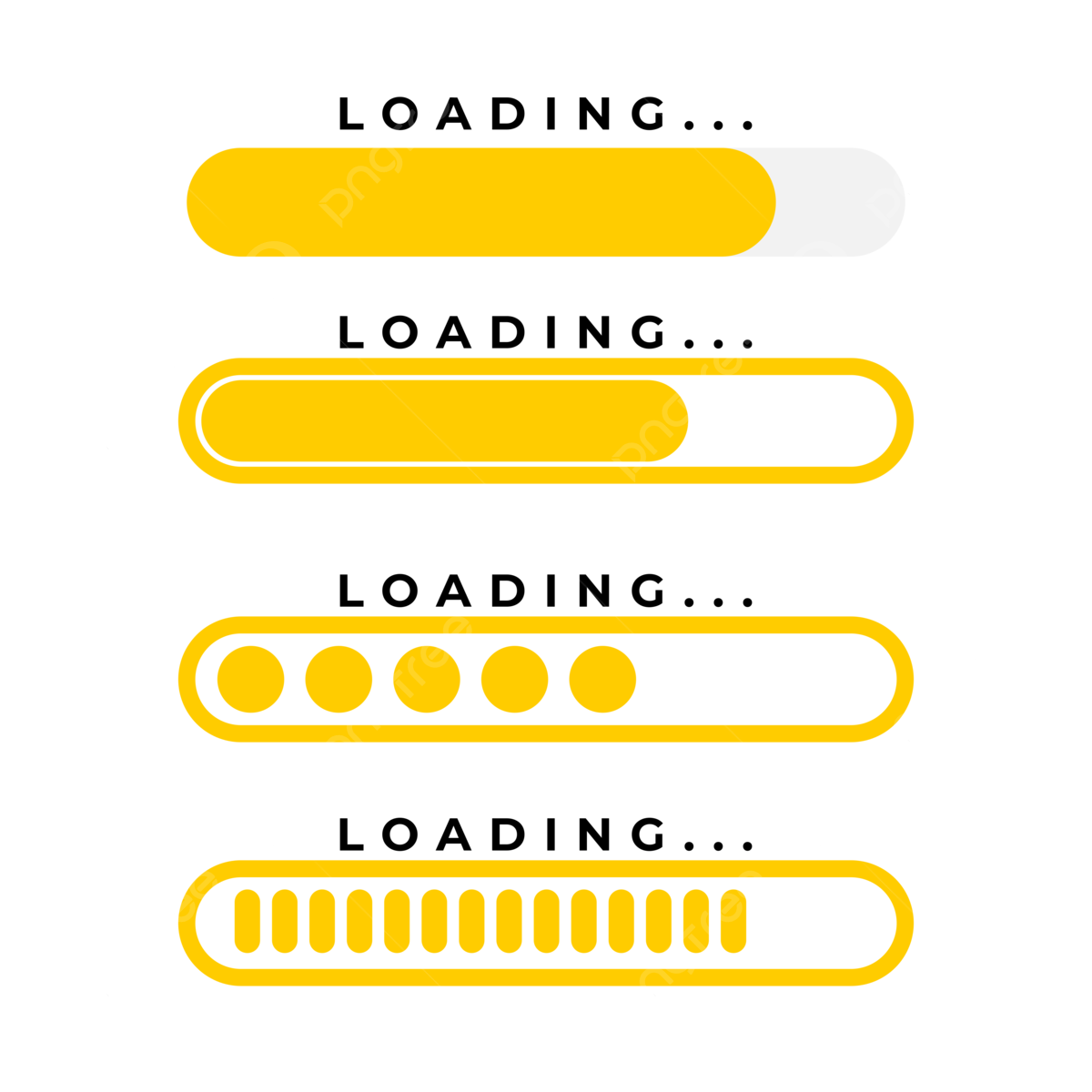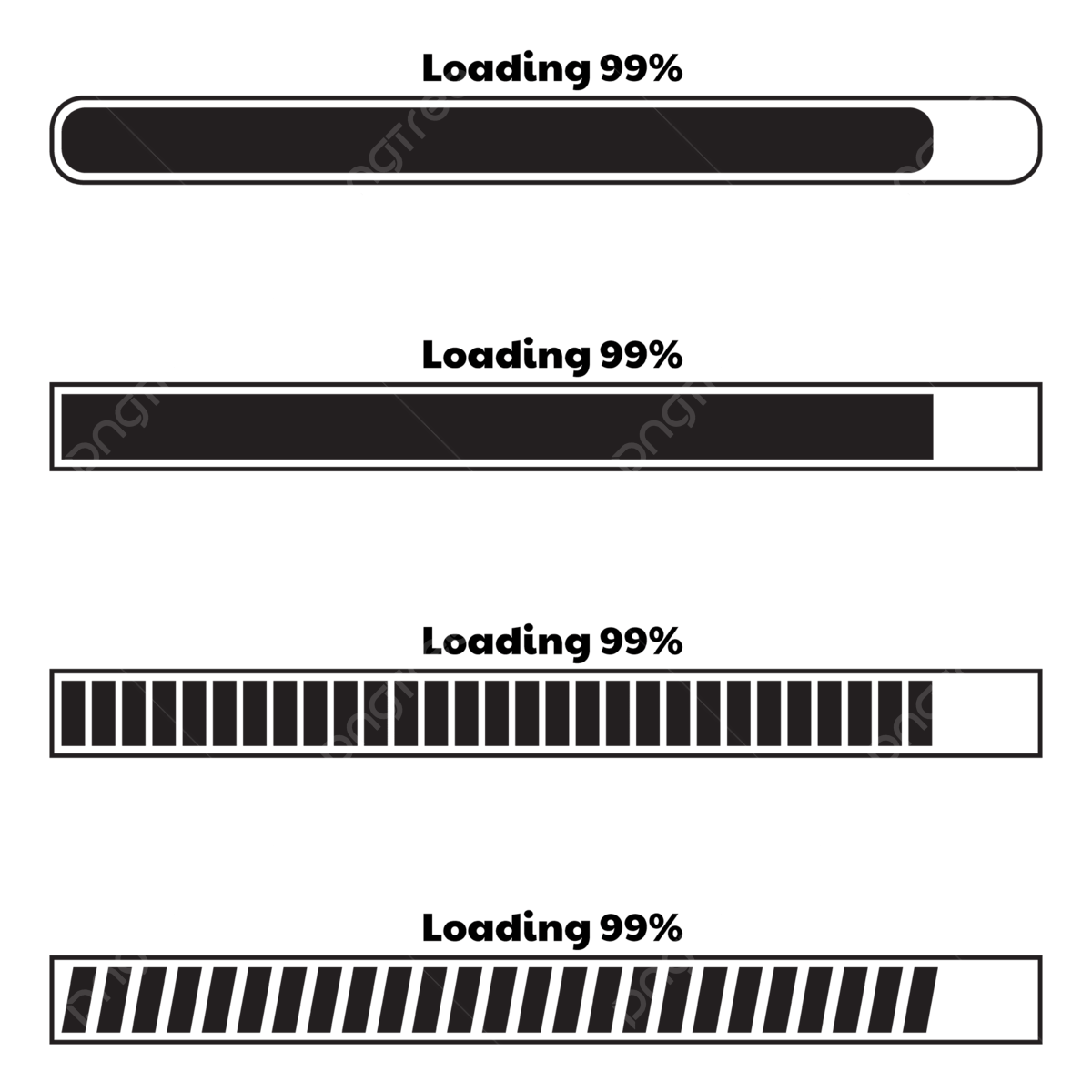Download top and best high-quality free Loading PNG Transparent Images backgrounds available in various sizes. To view the full PNG size resolution click on any of the below image thumbnail.
License Info: Creative Commons 4.0 BY-NC
When you visit a website, you may notice a brief moment between clicking the link and the page fully loading. This process of the page appearing on your screen is called loading. Loading occurs on various forms of media, including websites, apps, and videos, and is a crucial aspect of online experiences.
This article will discuss what loading means, how it works, and why it matters when interacting with digital content. Read on to learn more about what happens when you see the term “Loading” on your screen.
What is Loading?
Loading, in simple terms, is the process by which digital media displays on a screen. It often occurs when opening a website, starting an app or playing a video. Loading is an umbrella term that speaks to several phases of input and output operations. When you click on a link or press a button, the device sends a request to the server. The server then processes the request and delivers back a series of signals. These signals represent the graphics, images, text and other content that make up the digital media you wanted to access. Loading refers to the time spent in this process between the request and the delivery of the desired information to the device.
Types of Loading
There are three main types of loading: initial loading, interim loading and dynamic loading.
Initial Loading refers to the loading process when you open a website or app for the first time. During initial loading, all the page’s content, graphics, media, and scripts are loaded from the server. The loading bar fills until the site is fully loaded and displayed.
Interim Loading is a secondary loading page that appears when you navigate from one page to another within the same website or app. Interim loading pages also show progress bars that indicate how much of the new digital media has been loaded and how much remains.
Dynamic Loading happens when you request new information, typically through interaction with a site or app while it’s loaded. This type of loading speeds up the process because only the particular bit of data needs to be loaded instead of every element of the page loaded initially.
Connection Speed
Your internet connection speed affects the loading experience. A high-speed connection loads sites and media more quickly, while a slower connection may produce lag or buffering. Connection speed is typically measured in megabits per second or Mbps. The higher the Mbps, the faster the connection. A wired internet connection usually has higher Mbps than a wireless connection.
Factors that Affect Loading Time
Several factors can affect the loading process, including:
Image Size and Quality – The size and quality of images impact loading time. High-quality images with larger file sizes take longer to load than smaller, low-quality images.
Website and App Design – The design of a website or app directly affects loading times. Too much media, scripts, and graphics on a page can slow down the loading process, leading to a less favorable user experience.
Amount of Content – The amount of content on a website or app affects the loading time. Sites that host a lot of media or content may take longer to display than sites that have fewer graphics, videos, or images.
Device Performance – The performance of your device influences loading speed. Older or low-end devices may struggle to keep up with newer technology, which may affect loading times.
Importance of Loading
Loading speed affects a user’s experience on a website or app. The faster a website or app loads, the more optimal the user’s experience. A slow loading speed may lead to frustration or disinterest, leading to the user abandoning the website or app. Studies have shown that users often leave a website that takes three or more seconds to load. A fast loading speed helps to keep the user engaged, making them more likely to spend additional time and interact with specific content.
Final thoughts
Loading is a process that occurs across various forms of digital media. It involves sending a request to the server and receiving or displaying digital media on a screen. The loading process has three common types: initial loading, interim loading, and dynamic loading. Connection speed and several other factors affect loading speed. Fast loading speeds result in a more satisfying user experience. By understanding loading, users can optimize their digital media experiences and appreciate the behind-the-scenes processes of their devices.
Download Loading PNG images transparent gallery
- Loading PNG Pic
Resolution: 200 × 200
Size: 1 KB
Image Format: .png
Download
- Loading PNG Picture
Resolution: 1200 × 1200
Size: 67 KB
Image Format: .png
Download
- Loading PNG
Resolution: 200 × 200
Size: 77 KB
Image Format: .gif
Download
- Loading Transparent
Resolution: 1200 × 1200
Size: 95 KB
Image Format: .png
Download
- Loading
Resolution: 360 × 360
Size: 3 KB
Image Format: .png
Download
- Loading Background PNG
Resolution: 1920 × 1920
Size: 19 KB
Image Format: .png
Download
- Loading No Background
Resolution: 512 × 512
Size: 7 KB
Image Format: .png
Download
- Loading PNG Clipart
Resolution: 1200 × 1200
Size: 48 KB
Image Format: .png
Download
- Loading PNG Cutout
Resolution: 512 × 512
Size: 13 KB
Image Format: .png
Download
- Loading PNG File
Resolution: 256 × 256
Size: 4 KB
Image Format: .png
Download
- Loading PNG Free Image
Resolution: 256 × 256
Size: 9 KB
Image Format: .png
Download
- Loading PNG HD Image
Resolution: 600 × 600
Size: 6 KB
Image Format: .png
Download
- Loading PNG Image File
Resolution: 512 × 512
Size: 11 KB
Image Format: .png
Download
- Loading PNG Image HD
Resolution: 512 × 512
Size: 5 KB
Image Format: .png
Download
- Loading PNG Image
Resolution: 128 × 128
Size: 4 KB
Image Format: .png
Download
- Loading PNG Images HD
Resolution: 512 × 512
Size: 7 KB
Image Format: .png
Download
- Loading PNG Images
Resolution: 400 × 400
Size: 5 KB
Image Format: .png
Download
- Loading PNG Photo
Resolution: 800 × 800
Size: 23 KB
Image Format: .png
Download
- Loading PNG Photos
Resolution: 1200 × 1200
Size: 114 KB
Image Format: .png
Download


















